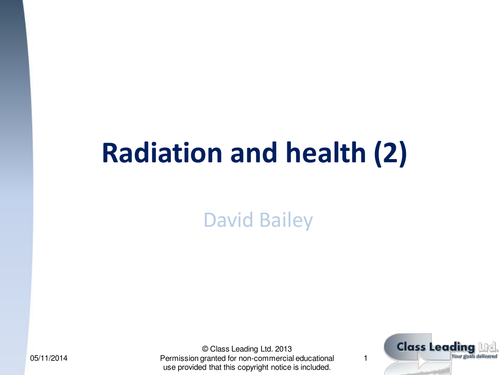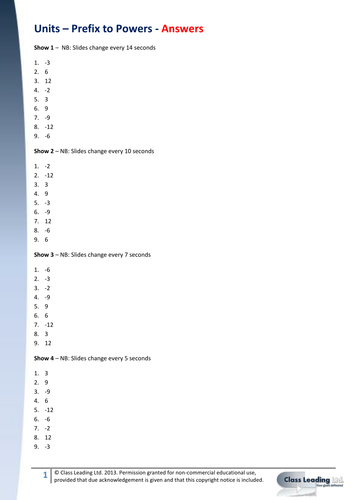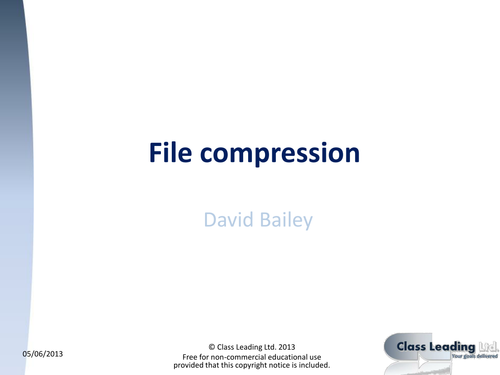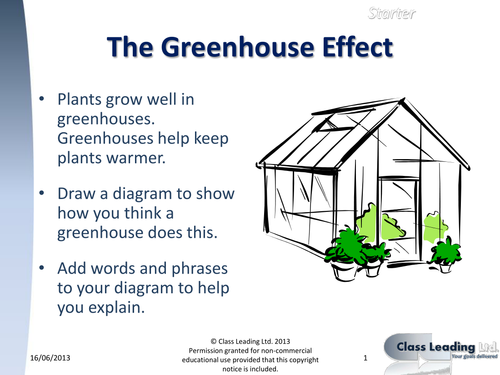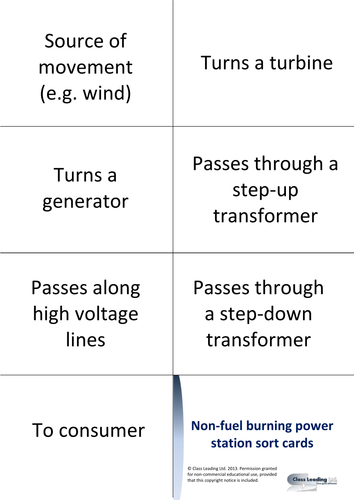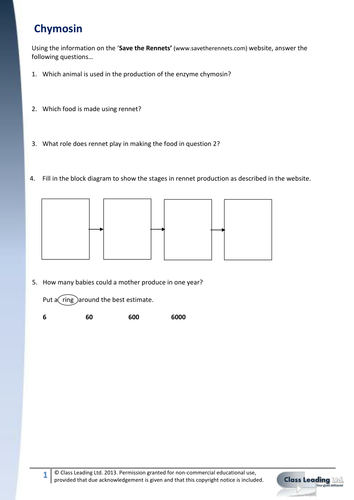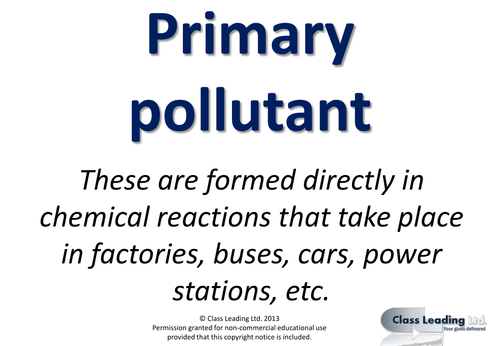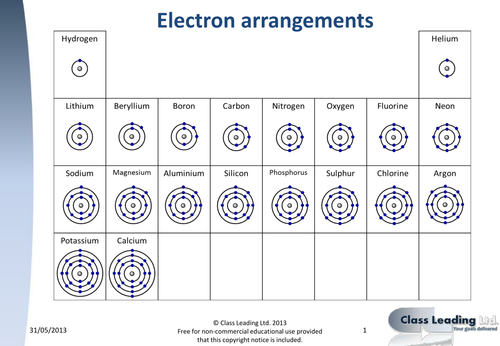314Uploads
260k+Views
194k+Downloads
All resources

How risky is radon - graded questions
This activity contains a powerpoint with graded questions & answers and matching pupil activity sheets, designed to be used at the end of a lesson and/or the start of the next lesson to review previous learning. The questions are based on the previous OCR 21st Century Science Specification unit P3, although could be used with other exam boards.
Clicking through the show reveals answers one a time. These reduce to A5 easily, the ideal size for most pupils. Please note grades are approximate.

Radiation and health (2) - graded questions
This activity contains a powerpoint with graded questions & answers and matching pupil activity sheets, designed to be used at the end of a lesson and/or the start of the next lesson to review previous learning. The questions are based on the previous OCR 21st Century Science Specification unit P3, although could be used with other exam boards.
Clicking through the show reveals answers one a time. These reduce to A5 easily, the ideal size for most pupils. Please note grades are approximate.

Seafloor Spreading - graded questions
This activity contains a powerpoint with graded questions & answers and matching pupil activity sheets, designed to be used at the end of a lesson and/or the start of the next lesson to review previous learning. The questions are based on OCR 21st Century Science Specification, although could be used with other exam boards.
Clicking through the show reveals answers one a time. There are two slightly different activity sheets for differentiation - one has key words, the other without. These reduce to A5 easily, the ideal size for most pupils. Please note grades are approximate.

Geohazards (2) - graded questions
This activity contains a powerpoint with graded questions & answers and matching pupil activity sheets, designed to be used at the end of a lesson and/or the start of the next lesson to review previous learning. The questions are based on OCR 21st Century Science Specification, although could be used with other exam boards.
Clicking through the show reveals answers one a time. There are two slightly different activity sheets for differentiation - one has key words, the other without. These reduce to A5 easily, the ideal size for most pupils. Please note grades are approximate.

Geohazards (1) - graded questions
This activity contains a powerpoint with graded questions & answers and matching pupil activity sheets, designed to be used at the end of a lesson and/or the start of the next lesson to review previous learning. The questions are based on OCR 21st Century Science Specification, although could be used with other exam boards.
Clicking through the show reveals answers one a time. There are two slightly different activity sheets for differentiation - one has key words, the other without. These reduce to A5 easily, the ideal size for most pupils. Please note grades are approximate.

The Solar System - graded questions
This activity contains a powerpoint with graded questions & answers and matching pupil activity sheets, designed to be used at the end of a lesson and/or the start of the next lesson to review previous learning. The questions are based on OCR 21st Century Science Specification, although could be used with other exam boards.
Clicking through the show reveals answers one a time. There are two slightly different activity sheets for differentiation - one has key words, the other without. These reduce to A5 easily, the ideal size for most pupils. Please note grades are approximate.

Are we alone - graded questions
This activity contains a powerpoint with graded questions & answers and matching pupil activity sheets, designed to be used at the end of a lesson and/or the start of the next lesson to review previous learning. The questions are based on OCR 21st Century Science Specification, although could be used with other exam boards.
Clicking through the show reveals answers one a time. There are two slightly different activity sheets for differentiation - one has key words, the other without. These reduce to A5 easily, the ideal size for most pupils. Please note grades are approximate.

Sources of information - starter
This resource is an was originally designed for instant engagement, to be on display on entry to the room. The students are given a period of time (say 3 minutes) to rank order the sources of information. This works well in groups with mini-whiteboards. The teacher then asks students to indicate whether each source was in the top 3, middle 3 or bottom 3 – e.g. by show of hands. This supports a discussion on reliability and disagreement between groups provides chance for cognitive conflict and students explaining their reasoning. It was originally designed as a starter to LSS activity 3.1

Maths Skills - Units - Prefix to Power Starter
These are a sequence of powerpoint shows designed as an instant engagement task (rolling on screen as learners enter the room for immediate engagement with learning). Learners write down the missing number to say what power of ten would represent the prefix. They are essentially the same task (with rearranged slides) but get progressively more demanding (as the changeover of slide gets faster) as the numbers in brackets increase. Start the students with (1) and then as they get faster, use the more demanding versions.

P2 Images, compression and file size
Keywords: Image, quality, file size, download time, compression
A series of activities that use a familiar image to get across the relationship between file size and image quality. It also supports learners to consider the effect of compression on image quality. It was intended to use the powerpoint show as a starter and follow it up with the file size worksheet, then the compression worksheet. Originally designed for unit P2 of 21st Century Science. Right click the web link to download the powerpoint show.

Data Handling - Key words
This is a small collection of key words related to data handling. They are designed as a display tool. Remember if laminating to use matt laminates for wall displays to avoid reflection problems.
Key words: range, mean, true value, average, real difference.

Greenhouse Effect starter - Draw what you think
A simple but effective activity to establish prior knowledge at the start looking at the topic of the Greenhouse effect. Learners can be encouraged to use scientific vocabulary and ideas. It is a great way of finding out how they think a greenhouse works before looking at the atmospheric effect. Works well when working in small groups (e.g. 3) on a large piece of paper. Really helps them to think when they are asked to justify their reasoning.
Right-click then 'save as&' the web link to download the PowerPoint show.

Power station sort cards - sequencing
This resource is to help learners either learn or revise the sequence of events in generating electricity for consumers. The statements on the card are partial statements about what happens during this sequence. Learners could try sorting these as a prediction of the sequence. This allows for discussion & cognitive conflict. Students could justify their reasoning, complete the statements and/or sequence by indicating what is being referred to at each stage, compare similarities é differences é highlight differences in other power stations e.g. nuclear. Jumbled é non-jumbled versions included.

Bunsen burner flames
This is a powerpoint show and pdf giving the reactions taking place and constituents of Bunsen burner flames of three different colours.
Right click the web link to download the powerpoint show.

'Save the Rennets' - reliability of the internet
This activity involves looking at reliability of information found on the internet and encourages students to evaluate this critically in light of the discovery of new information. Students really do engage with the activity and find it a useful learning experience. An activity sheet and guidance sheet are included. Please note that the resource points to two external websites which I acknowledge as external sources of information and as such cannot be held responsible for the content of these websites. It is recommended that these are checked fully before use.

Light open evening display information cards
These cards were produced to provide explanations of light experiments at an open evening. They would also be suitable as information cards for KS3 light lessons.

Primary & Secondary pollutants key word display
The key words primary and secondary pollutants with meanings for display purposes. Please remember if laminating to use matt finish laminates to avoid reflection that renders the display unreadable.

Workload Reduction - GREAT lesson planning
This is a lesson template and guidance document and is designed as a workload reduction tool for whole school use.
Many different subject areas and different phases have different requirements of lesson and lesson sequence planning. Across all subjects there are some common areas that are features of effective teaching, regardless of the subject. These are the features included in GREAT lesson planning.
This could be used as a short-term (lesson plan) or medium-term plan (scheme of learning that covers a sequence of lessons) depending upon the subject or context.

GCSE Physics/ Science flash cards (suitable to make at home)
These are flash cards for GCSE Physics/ Science. They cover key facts that pupils need to learn.
They are designed to be suitable for pupils to print at home and make up the cards.
They include advice as to how to use the flash cards to help them to make the best use of their time when learning.
Flash cards sets included are:
Physics equations that need to be learnt
Circuit symbols, including some common questions linked to the symbols
Force and motion sketch graphs
Designed for AQA Science.

Electron arrangement worksheet
This resource contains a worksheet and answer sheet for showing the electron arrangements of the first 20 elements.
A premium resource is also available that shows an animated PowerPoint slideshow and has a variety of different sheets with various levels of scaffolding to support learners. This can be found here: https://www.tes.com/teaching-resource/-12957111


